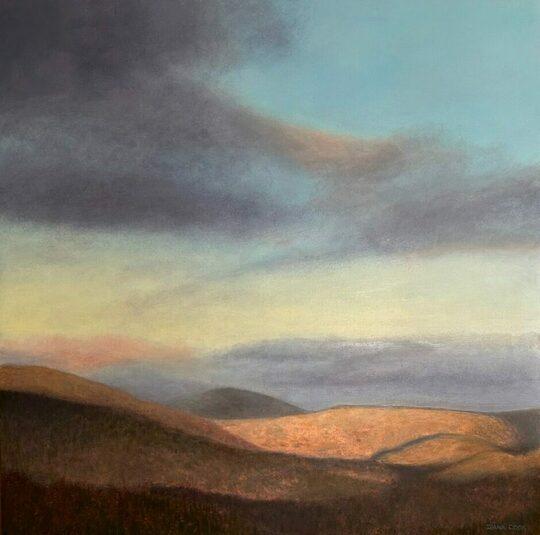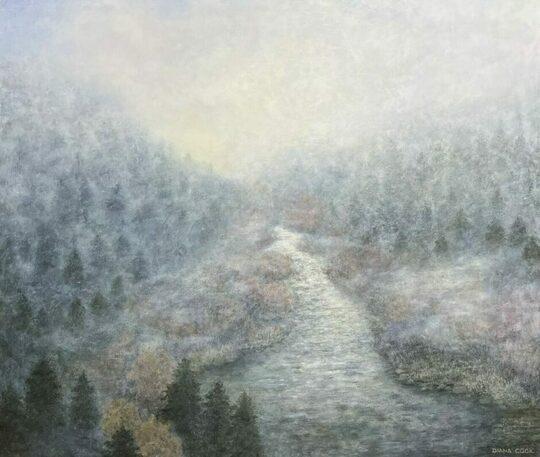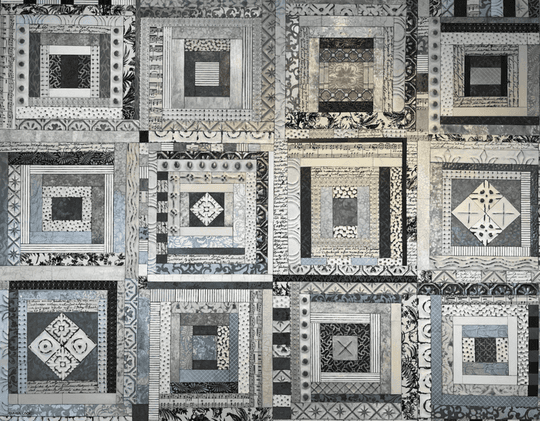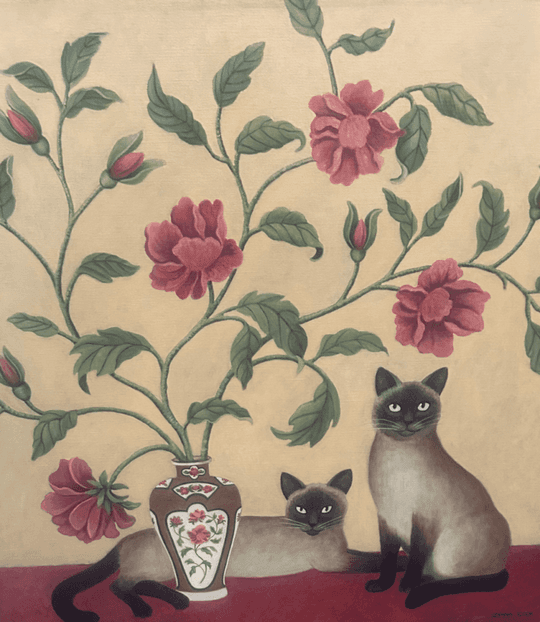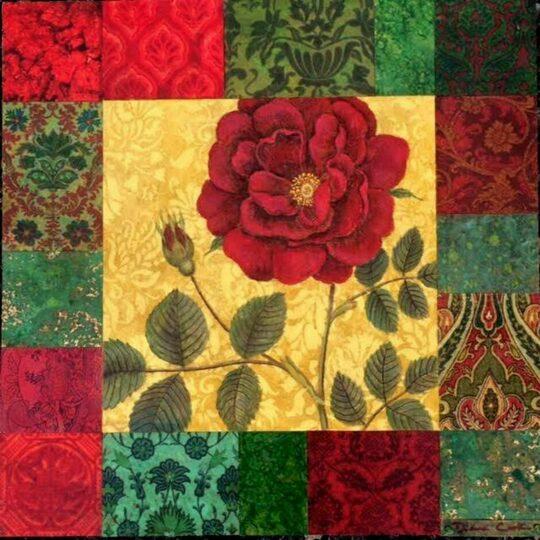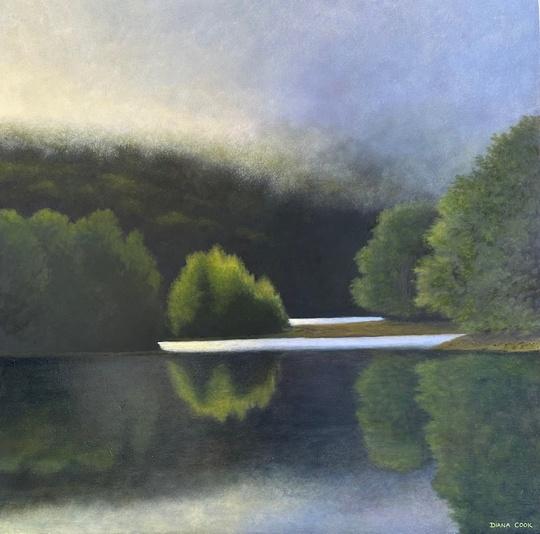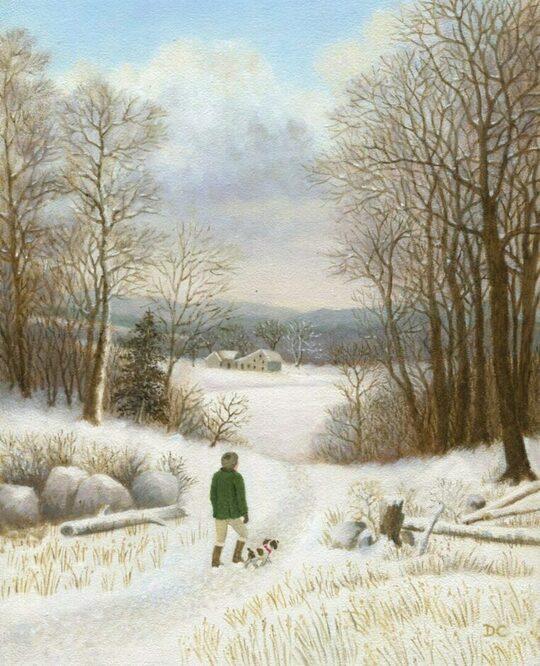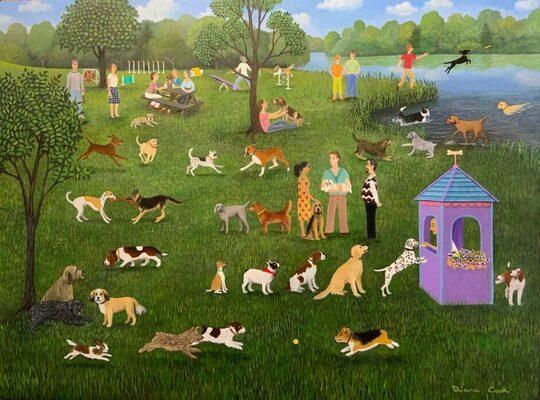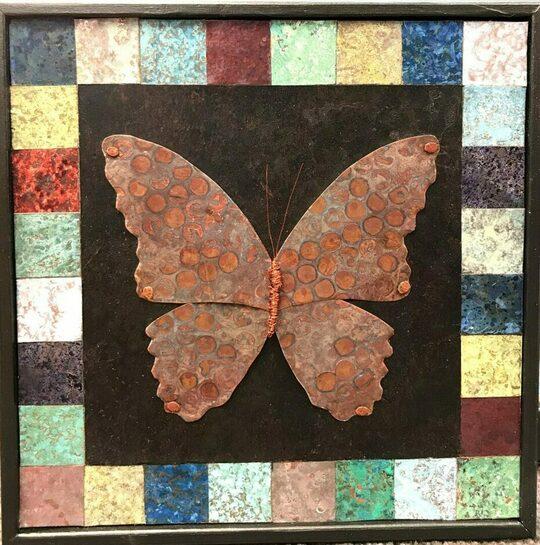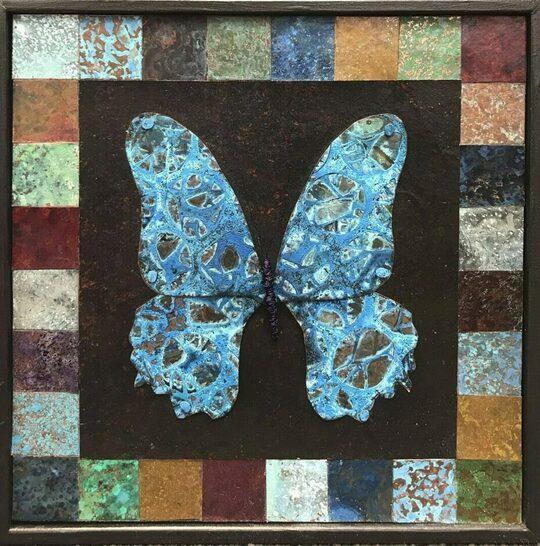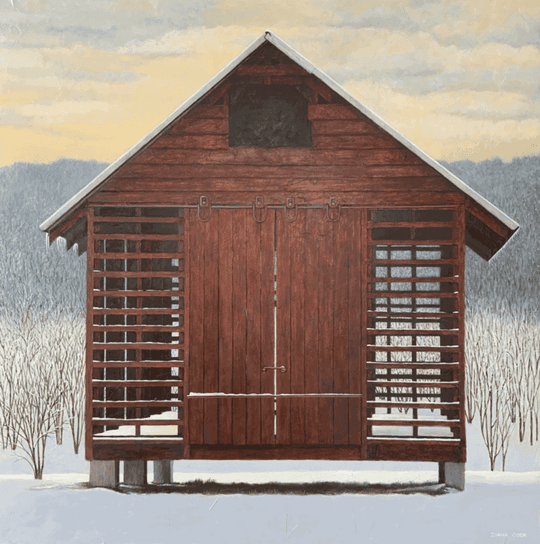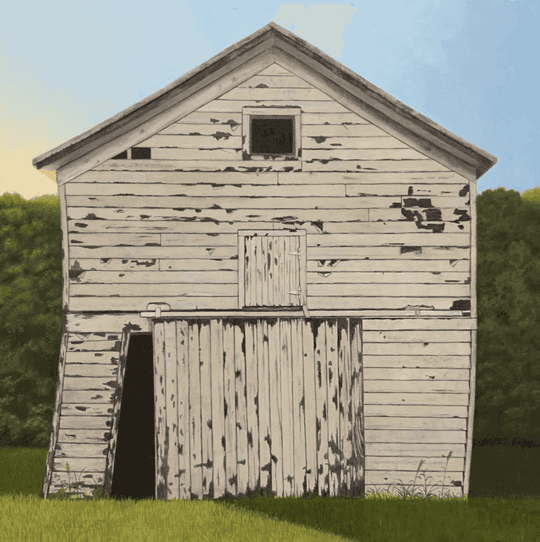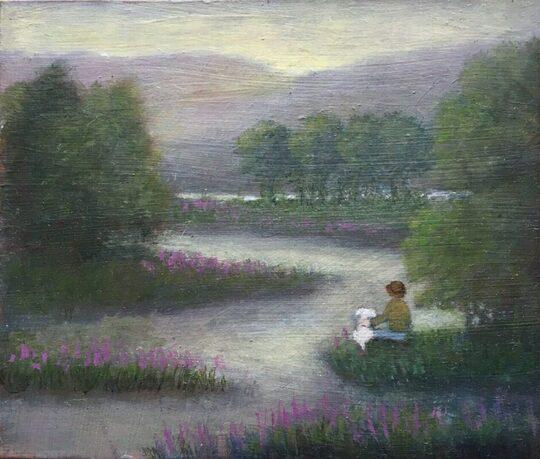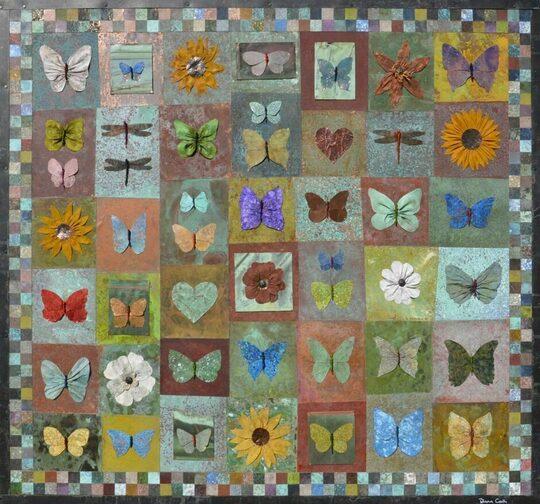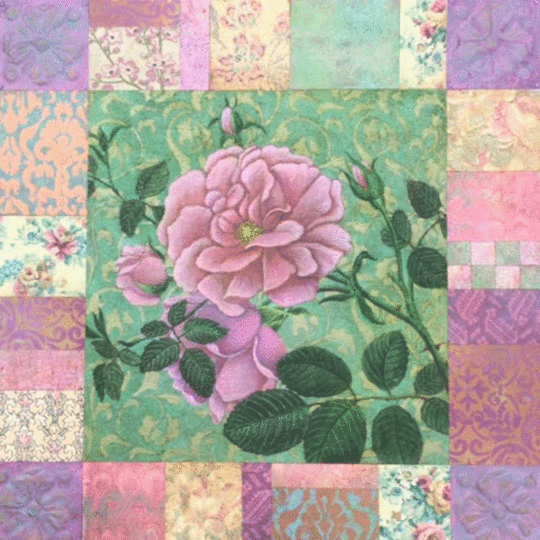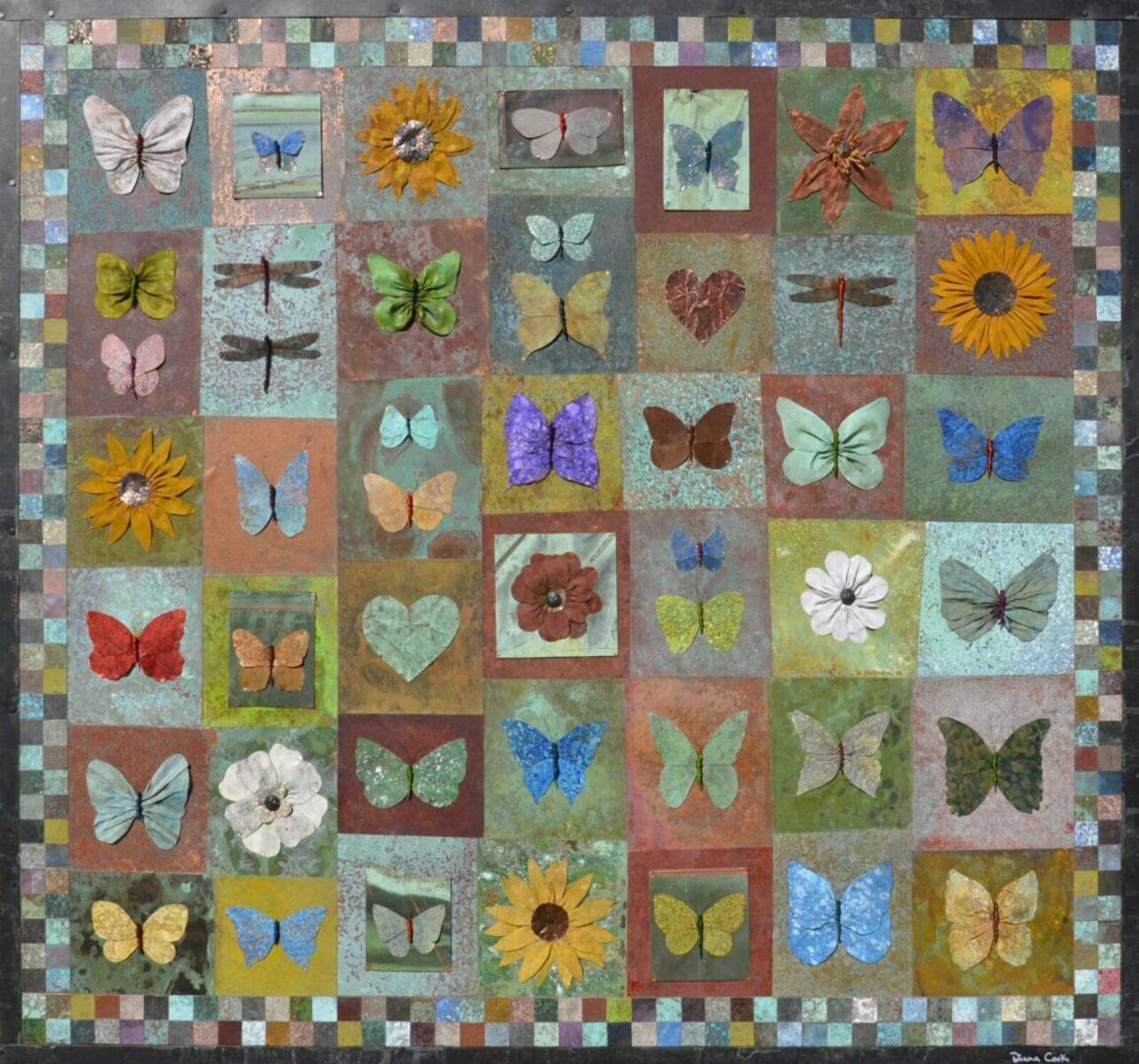
I have an affinity for things and places with a history. I like muted paint finishes, crackled varnish, worn leather, and oxidized metal. I love interiors with an eclectic mix of antique furnishings and personal treasures. Carved woodwork, layers of faded textiles, and walls of old prints and paintings are comfortingly alluring. Antique shows and flea markets are a favorite haunt where I collect vintage fabrics, wallpapers, and ephemera to use in my work. The search for materials is as satisfying to me as the creative process—the cutting and arranging are as fulfilling as any brushstroke. There is a visual excitement that happens when many disparate patterns, images, colors, and textures are combined to form a harmonious whole that I want to create in my work. In my new work, I am exploring the place between decorative and fine art, and figurative and abstract art. I don’t start with a final vision but use a repetitive pattern to create a structure; I then intuitively add collected material and paint. I find collage to be a liberating medium. I love being able to rearrange things, and it allows me the freedom to move in other directions and be open to unexpected discoveries. My goal is that my work will feel simultaneously historic and modern—that it will connect the viewer to the past but invite them to see it in a new way. Technical Information Twenty-six years as a decorative painter has given me an opportunity to employ many different materials and techniques. I first used metal patinas when I was commissioned to create a verdigris finish on some wall sconces. Recently, I have been experimenting with the variety of colors and textures that can be achieved on copper using solutions that speed up the oxidation process. The oxidation occurs naturally on some metals over long exposure to air and water. I find copper appealing as a collage material because it is easily cut, glued, and tacked. I use scrap copper sheets, which come in small pieces of varying thicknesses. The copper has a protective oil-based coating and a smooth reflective finish that will not accept patinas. The surface must be abraded and cleaned, so I sand the copper front and back with a rotary sander and 40-grit sandpaper, then wipe the piece down with a metal cleaner. The patina solutions produce a green, blue, brown, or black film on the surface of copper and similar metals and can be applied hot or cold, though I primarily use cold patinas. They are applied with a sprayer, sponge, or brush, and it is preferable to work outside. The chemicals are corrosive and the vapors harmful, so protective gloves, goggles, and a mask are essential. The solutions can be mixed with colored dyes to create a wide range of colors. Once the patina has fully developed—a process that takes anywhere from a few minutes to overnight—I spray a solvent-based acrylic resin varnish with UVLS to protect the surface and help bond the patina to the copper. Finally, I cut the copper to the size I need, glue it, and add weights to ensure a good bond to the wood support.

